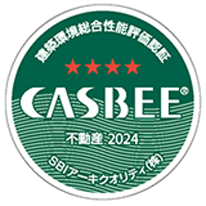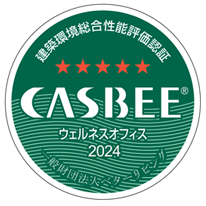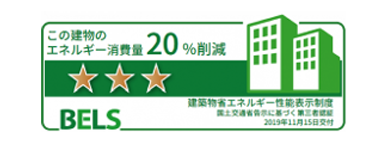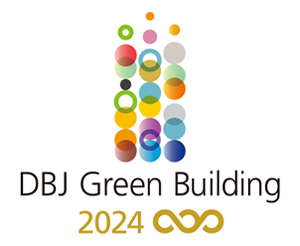 Basic Policy and Promotion Framework
Basic Policy and Promotion Framework
MUFG Asset Management (“MUFG AM”) is the global brand of Mitsubishi UFJ Trust and Banking Corporation, Mitsubishi UFJ Asset Management Co., Ltd., Mitsubishi UFJ Real Estate Asset Management Co., Ltd. (hereinafter, “the Company”), Mitsubishi UFJ Asset Management (UK) Ltd., and Mitsubishi UFJ Alternative Investments Co., Ltd. Under this brand, they strive to foster the sustainable business growth of investees and to enhance their value while actively addressing social issues.
The Company has adopted the MUFG AM Sustainable Investing Policy, common to MUFG AM companies, as the policy on promoting sustainable investment.
MUFG AM Sustainable Investing Policy
To enhance the medium- to long-term value of investees, the Company recognizes the importance of sustainability initiatives. It has established the Sustainable Real Estate Investing Policy to promote sustainability in real estate investment activities.
Identification of Materiality
To maximize the impact of ESG investment, the Company believes it is necessary to clarify the most important matters among the wide range of ESG issues, particularly those issues for which significant improvements can be expected through the Company’s activities. To enhance investment value through ESG activities, MUFG AM has narrowed down the issues for focused discussions with investees to five themes: climate change, human rights and diversity, health and safety, governance structures, and information disclosure, and established them as Material ESG Issues common to MUFG AM as a whole. These five themes are not only topics for discussion with investees, but they are also considered in all asset management activities and are utilized as the starting point for promoting ESG investment initiatives.


Sustainability Committee
To implement the Sustainable Real Estate Investing Policy and promote sustainability initiatives, the Company regularly convenes the Sustainability Committee with members across the organization, including the Director in charge of the Corporate Planning Dept.
| Committee Members |
Chair
:
Director in charge of Corporate Planning Dept.
Members
:
Director in charge of the Compliance Section or the general manager of the Compliance Section, and executives and employees designated by the chair* |
|---|---|
| Meeting frequency | Meets four times per year in principle |
| Main deliberation and reporting items |
[Deliberation] ・Matters related to establishment of initiative policies related to sustainability ・Matters related to establishment and amendment of internal regulations related to the previous item ・Status of initiatives of real estate owned by funds under the Sustainable Real Estate Investing Policy ・Matters related to addressing changes in the environment related to sustainability, including legal systems and social norms [Reporting] ・ESG-related information and additional information from external information companies and various surveys, etc. ・Other matters related to sustainability As a general principle, sustainability-related information is shared and matters are deliberated and reported within the Sustainability Committee, which includes all managers in charge of real estate operations. Based on their job responsibilities and authority, each relevant department, including departments in charge of operations, makes decisions and steadily implements actionable measures. Through a PDCA cycle consisting of deliberation on policies and measures, reporting of progress, and consideration and execution of improvement measures, the Company is continuously strengthening initiatives related to sustainability. In addition, the Sustainability Committee’s matters for deliberation and reporting are reported in each case to the Investment Committee and Investment Corporation Board of Directors. |
 Initiatives and external certification/assessment
Initiatives and external certification/assessment
Signing and participation in initiatives
The Company participates in the initiatives listed below (including those in which MUFG AM is involved).

TCFD is the Task Force on Climate-related Financial Disclosures. It was established to consider how to conduct climate-related information disclosure and how financial institutions should respond.
MUFG AM, including our Company, declared its agreement with TCFD recommendations as a group in September 2023.

NZAM is an international initiative conducted by asset management companies striving for net zero greenhouse gas emissions in managed assets by 2050 in line with the targets of the Paris Agreement (efforts to limit the average global temperature increase since the industrial revolution to 1.5°C).
MUFG AM, including the Company, supports the basic principles of NZAM and became a signatory institution in November 2021.
Acquiring external certifications/assessments
GRESB Real Estate Assessment

The Global Real Estate Sustainability Benchmark (GRESB) is the name of an organization that performs and administers an annual benchmark assessment that measures the environmental, social, and governance (ESG) considerations of real estate companies and funds. It was established in 2009 primarily by a major pension fund group in Europe that spearheaded the Principles for Responsible Investment (PRI). The GRESB Real Estate Assessment is not for individual properties; rather, it evaluates the sustainability initiatives of real estate companies, REITs, and private real estate funds.
In 2018, the Company became the first trust bank to receive the GRESB Real Estate Assessment and has since participated in acquiring assessments as a real estate fund entrusted with investment. MUFG Private REIT, Inc., for which the Company is entrusted with asset management activities, received two stars in the GRESB Real Estate Assessment conducted in 2024, and among private real estate funds, an office fund received four stars and a hotel fund received two stars.
All participating funds acquired a Green Star rating, which shows that they are outstanding participants in both the management component, which evaluates policies and organizational structures, etc. for promoting ESG, and the performance component, which evaluates environmental performance at managed properties and initiatives with tenants, etc.
Acquiring environmental certification
Multiple managed properties for which the Company is entrusted to manage have received real estate certifications based on assessments of various initiatives and management systems in property management. The Company believes that utilizing various certification systems that evaluate not just environmental factors, but also each component of ESG, helps highlight a property’s added value and sustainability, which contributes to the enhancement of asset value for investors.


CASBEE real estate assessment and certification
The Comprehensive Assessment System for Built Environment Efficiency (CASBEE) is a system developed in Japan under the leadership of the Ministry of Land, Infrastructure, Transport and Tourism. It comprehensively evaluates a building’s quality, including not only environmental considerations like energy efficiency and use of materials with low environmental impact, but also the level of indoor comfort and scenery considerations. CASBEE Real Estate is one of several CASBEE assessment systems. It was developed for the purpose of utilizing the results of a building’s environmental evaluation in a real estate assessment. Scores are given for five assessment categories, 1. Energy/greenhouse gases, 2. Water, 3. Resource use/safety, 4. Biodiversity/site, and 5. Indoor environment. Based on these categories, ratings are given as S rank, A rank, B+ rank, or B rank, accordingly. The assessment criteria are established by narrowing down to items with a strong relationship with real estate assessment so CASBEE can be utilized by people involved in real estate development and transactions. CASBEE Wellness Office was developed as a tool to evaluate the health and comfort of buildings.
Our fund-managed properties have obtained CASBEE Wellness Office certification for office buildings and CASBEE Real Estate certification for residential properties.

BELS
The Building-Housing Energy-efficiency Labeling System (BELS) is a system under which third-party institutions conduct assessments and labeling of the energy-efficiency performance of buildings based on the Act on the Improvement of Energy Consumption Performance of Buildings (Building Energy Efficiency Act). Buildings are evaluated based on the Building Energy Index (BEI), which is calculated from the amount of primary energy consumption based on building energy consumption performance standards stipulated by the government and on cladding performance. Houses and non-houses with energy efficiency facilities are evaluated on a seven-level scale, receiving from 0 to 6 stars.
Our fund-managed properties have obtained certification for hotel and office properties.

DBJ Green Building certification
DBJ Green Building is a certification system created by the Development Bank of Japan Inc. in April 2011 to support real estate that gives consideration to the environment and society (Green Buildings). A comprehensive evaluation is conducted that includes not only the environmental performance of the property, but also its response to various stakeholders, including disaster preparedness and considerations for the community, accommodation for the social demands of stakeholders, and response to the diversification of tenant needs. The system evaluates and certifies real estate demanded by society and the economy.
Of the properties held by funds managed by the Company, offices, housing and other assets have acquired the certification.
 Environmental and social initiatives
Environmental and social initiatives
Environmental initiatives
Risk management for climate change
When making investment decisions
When considering a new investment, as a part of the due diligence (evaluation) process, the Company confirms the potential for the property to be flooded, inundated or submerged by water, by looking at inundation levels on various hazard maps and checking for any history of inundation. It adds this as one factor when judging whether to acquire the property. Another factor before acquisition is considering whether a necessary response is taken to increase resilience.
While managing properties
Along with identifying flood risks associated with investment properties, the Sustainability Committee shares information on measures to reduce energy consumption and confirms their progress, and, depending on the property, monitors the amount of energy consumed as it conducts risk management. In addition, in emergency situations such as natural disasters, a contact system is maintained for people involved in a project, and a system has been established to enable an appropriate response.
Initiatives in managed real estate
At properties held by funds the Company manages, the Company incorporates measures that contribute to the promotion of sustainability, as needed, and works to manage them in an environmentally friendly manner.
-
Inserting clauses related to energy efficiency and environmental considerations into rental contracts
The Company stipulates clauses related to environmental considerations in its rental contracts and cooperates with stakeholders in reducing environmental impact through energy savings and other means.
-
Delivery boxes and smart entrances
Delivery boxes are set up to allow for drop-off delivery, which solves the social issue of having to redeliver packages and reduces CO2 from delivery.
-
Enhancing environmental value through renovation work at older properties
The Company deploys LED lighting and water-saving facilities across various types of properties in order to promote energy savings.
At an older property the Company manages (use: offices), it planned a complete renovation of the building to coincide with the departure of a single-tenant lease, upgrading facilities by, for example, using LED lights for a portion of the lighting and deploying water-saving toilets. The construction project sought to lower the building’s environmental impact, and many initiatives were also promoted related to disaster preparedness and business continuity planning and to help raise tenant satisfaction levels. The overall value of the property was improved, including in the areas of the environment and society. -
Switching to electricity derived from sustainable energy
At a portion of the properties managed by the Company (use: offices), electricity supply and demand contracts were switched to electricity derived from renewable energy (hereinafter; “renewable power”) in compliance with RE100*. By adopting a power plan with non-fossil certificates, which combines non-fossil certificates certifying the environmental value of electricity created from non-fossil energy sources, the Company effectively achieved renewable power for the electricity used by the properties. This means the properties’ CO2 emissions are zero, including the portion used by tenants, as the initiative responds to the expectations of tenants and investors for reduced CO2 emissions.
*A collaborative initiative in which companies commit to 100% renewable energy for the electricity used in their businesses.

Sustainability-linked loan procurement
At MUFG Private REIT, Inc., which entrusts the Company with asset management, funds are procured using sustainability-linked loans.
Sustainability-linked loans are a fund procurement method aimed at promoting environmentally and socially sustainable economic activities and economic growth by setting sustainability performance targets (SPTs) linked to the borrower’s own sustainability targets, linking loan terms, such as interest rates, to the borrower’s performance against the SPTs, and motivating achievement of them. With these loans, GRESB Real Estate Assessment ratings are set as a performance target and interest rates change depending on its achievement.
Social initiatives
Collaboration with external stakeholders
-
Establishment of building management guidelines
The Company has established building management guidelines in order to put into practice the provisions of the Sustainable Real Estate Investing Policy and requires that property management companies (hereinafter, “PMs”) and other partner companies understand and cooperate with the policy. PMs are evaluated once a year in principle. The evaluations consider property management performance and business systems as well as considerations for and cooperation with the guidelines, with feedback to the evaluations being made through dialogue. The Company will cooperate with stakeholders not only during property management—in energy savings, CO2 emission reductions, selection of providers, and considerations for the environment and human rights in material procurement—but also in promoting sustainability on the supply chain.
-
Promoting energy saving activities together with tenants and PMs
At properties under management by the Company, utilizing in-building posters and regular reports from PMs to tenants, water, waste, and energy consumption data is returned to building users and awareness-raising activities are conducted for energy savings. Energy saving targets and achievement levels are shared with tenants, PMs, and other involved parties, as activities are promoted to raise awareness throughout the entire building.
Initiatives in managed real estate
At the properties of funds managed by the Company, the Company takes measures as needed to help promote sustainability and works for management that takes social factors into account.
-
Car and bicycle sharing
At properties under management by the Company, the Company has introduced car and bicycle sharing to improve tenant convenience and help solve the social issues of local traffic vulnerability.
-
Participation in local community activities
At the sites where managed properties are located, the Company participates in volunteer cleanups and a variety of arts and culture events and co-sponsors summer festivals. Through its support for such events, the Company is helping vitalize local communities.
-
Tenant satisfaction surveys
At properties under management by the Company, the Company administers regular surveys to identify and improve management-related issues and works to increase comfort levels and strengthen communication with tenants.
-
Ensuring the safety, security and comfort of building users and tenants
At properties under management by the Company, the Company conducts fire and earthquake drills, has established an emergency contact network, deploys disaster prevention and seismic isolation facilities, and stockpiles emergency supplies as it works to be prepared for disasters. In addition, the Company conducts renovation work not only to reduce environmental impact, but also to help with disaster preparedness and business continuity planning and to raise tenant satisfaction levels. The Company strives to enhance overall property value, including the environmental and social aspects.
Main renovation work -
Acquiring wellness certification
At properties under management by the Company (use: offices), various measures have been recognized and the properties have received an S rank in the CASBEE Wellness Office rating system.
The CASBEE Wellness Office assessment and certification system is a tool for evaluating the specifications, performance, and initiatives of buildings that support the maintenance and promotion of the health and comfort of building users. It looks not only at factors that directly impact the health and comfort of workers working in the building, but it also evaluates factors that help improve intellectual productivity and performance related to safety and security. Scores are given for five assessment categories: 1. Health and comfort, 2. Improving convenience, 3. Safety and security, 4. Management, and 5. Programs. Based on these categories, ratings are given as S rank, A rank, B+ rank, B- rank, or C rank.

